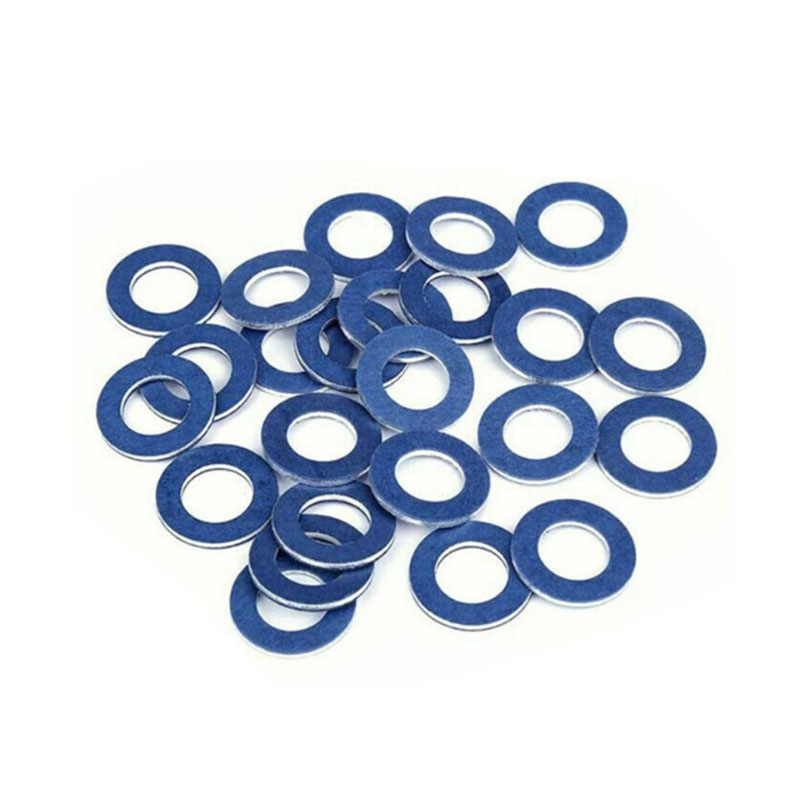Selecting the Right Oil Seal for Your Gearbox Needs and Performance
Understanding Oil Seals for Gearboxes Importance and Applications
Oil seals, often referred to as shaft seals or radial seals, are crucial components in various mechanical systems, especially in gearboxes. They serve essential functions in maintaining the integrity and functionality of machinery by preventing the leakage of lubricants and blocking the entry of contaminants. This article delves into the significance, design, and applications of oil seals in gearboxes.
The Role of Oil Seals in Gearboxes
In a gearbox, oil seals are primarily responsible for containing lubricant oils within the gearbox while also preventing dirt and moisture from infiltrating the system. Gearboxes typically operate under high pressure, temperature fluctuations, and environmental stressors, making effective sealing imperative. The effectiveness of an oil seal directly influences the longevity and performance of the gearbox, preventing issues such as premature wear, overheating, and mechanical failure.
Design and Materials
Oil seals are designed to accommodate radial and axial loads while withstanding various operating conditions. The primary function of an oil seal is to provide a barrier that maintains the lubrication necessary for efficient gear operation. The design of an oil seal generally consists of three main components the seal lip, the body, and the spring.
1. Seal Lip The seal lip is the contact surface that interacts with the rotating shaft. Its geometry and material composition are crucial for creating a reliable seal. A proper seal lip design minimizes friction while maximizing fluid retention.
2. Body The body of the oil seal provides structural support. It is typically made from a durable material that can withstand the pressure of the internal fluids and external factors.
3. Spring A small metal spring is often incorporated into the seal lip assembly. The spring exerts a consistent force against the lip, ensuring it maintains contact with the shaft, even under varying operating conditions. This feature is vital for dynamic seals where movement occurs.
Common materials utilized in the manufacture of oil seals include rubber compounds (e.g., nitrile, fluorocarbon), which provide flexibility and resilience, as well as thermoplastic materials for enhanced durability. The choice of material often depends on factors such as operating temperature, exposure to chemicals, and the specific type of lubricant used.
oil seal for gearbox

Types of Oil Seals
Several types of oil seals are available, each designed for specific applications in gearboxes
1. Radial Oil Seals The most common type, these seals work by pushing against the shaft, creating a seal that prevents oil leakage while allowing for rotation.
2. Axial Seals These seals are designed to prevent axial movement of fluids and are often used in conjunction with radial seals.
3. Combined Seals Some designs integrate features of both radial and axial seals, offering dual protection against leakage and contamination.
Applications in Gearboxes
Oil seals find applications across various sectors, including automotive, aerospace, industrial machinery, and marine equipment. In automotive gearboxes, for instance, oil seals ensure that transmission fluid remains contained, providing necessary lubrication for smooth gear shifting and preventing the ingress of dirt that could lead to component wear.
In industrial machinery, oil seals play a critical role in reducing maintenance costs and extending equipment lifespan by minimizing the chances of lubricant loss and contamination. In the marine industry, where gearboxes are often exposed to harsh environments, durable oil seals protect against seawater intrusion, ensuring efficient operation even in challenging conditions.
Conclusion
Oil seals are indispensable components in gearboxes, contributing significantly to the efficiency, performance, and longevity of mechanical systems. Their ability to prevent leakage while protecting the internal environment from external contaminants is crucial across various applications. As technology advances, so do the materials and designs of oil seals, providing enhanced performance for the evolving needs of modern machinery. Understanding and maintaining oil seals is essential for anyone involved in the operation or maintenance of gearboxes, as proper sealing can make a significant difference in mechanical reliability and operational efficiency.
-
Understanding the Front Main Engine Seal: Purpose, Maintenance, and Installation
News Jul.29,2025
-
Understanding O-Rings and Seal Rings: Types, Applications, and Custom Solutions
News Jul.29,2025
-
Understanding Crankshaft Oil Seals: Rear Seals, Pulley Seals, and Their Role in Engine Integrity
News Jul.29,2025
-
The Importance of Front and Rear Crankshaft Seals in Engine Performance and Oil Management
News Jul.29,2025
-
Crank Oil Seals: Functions, Types, and Cost Considerations in Engine Maintenance
News Jul.29,2025
-
A Comprehensive Guide to O-Rings and Seals: Types, Materials, and Global Applications
News Jul.29,2025
-
Mastering Diesel and Performance Engine Maintenance: A Guide to Critical Oil Gaskets
News Jul.28,2025
Products categories















